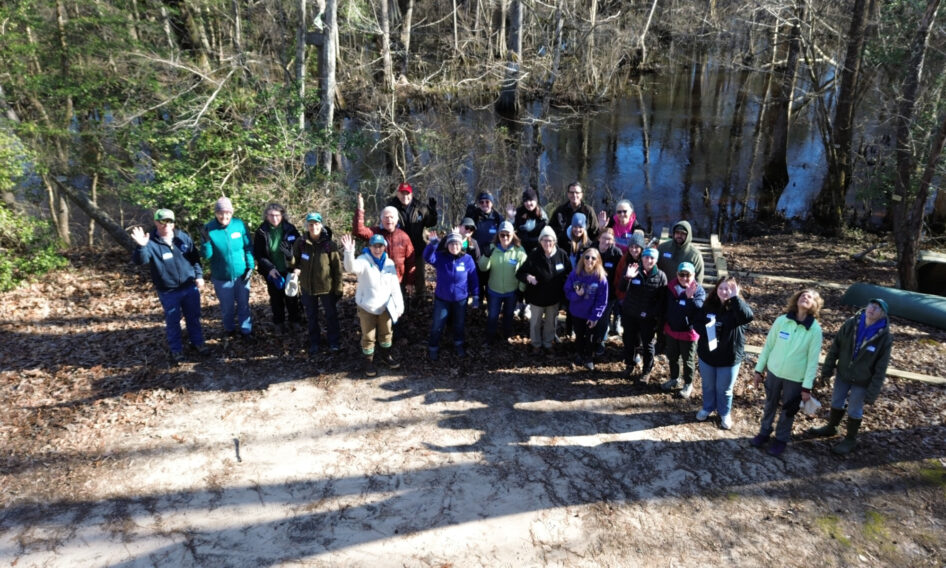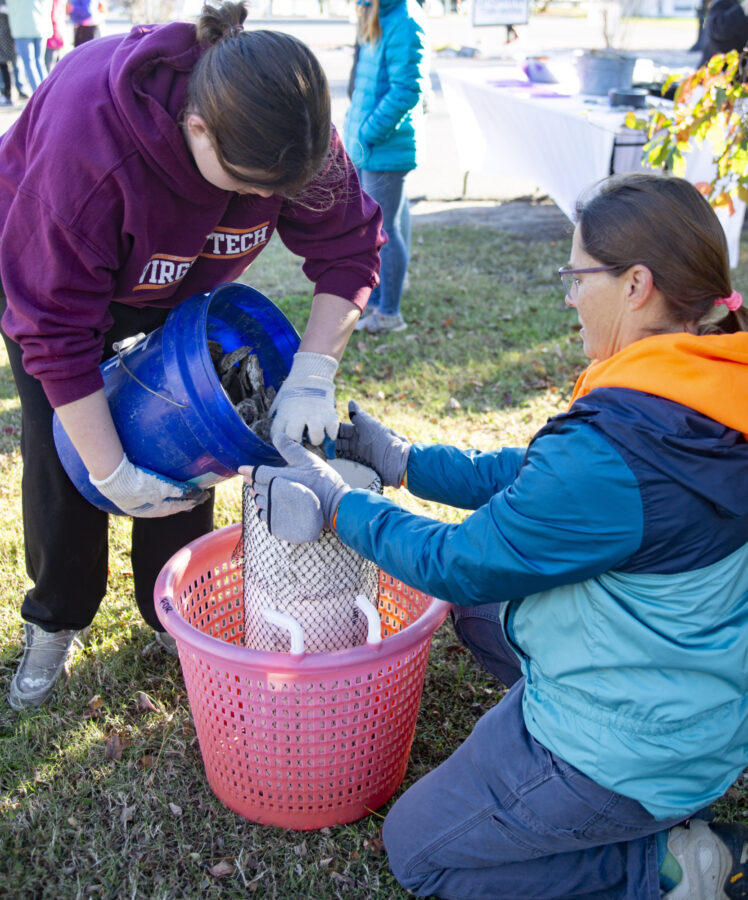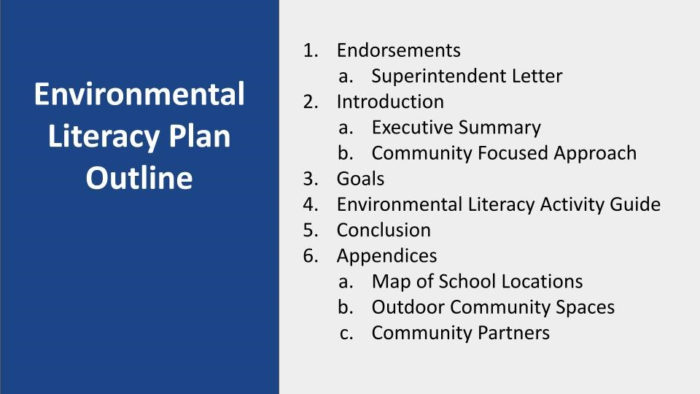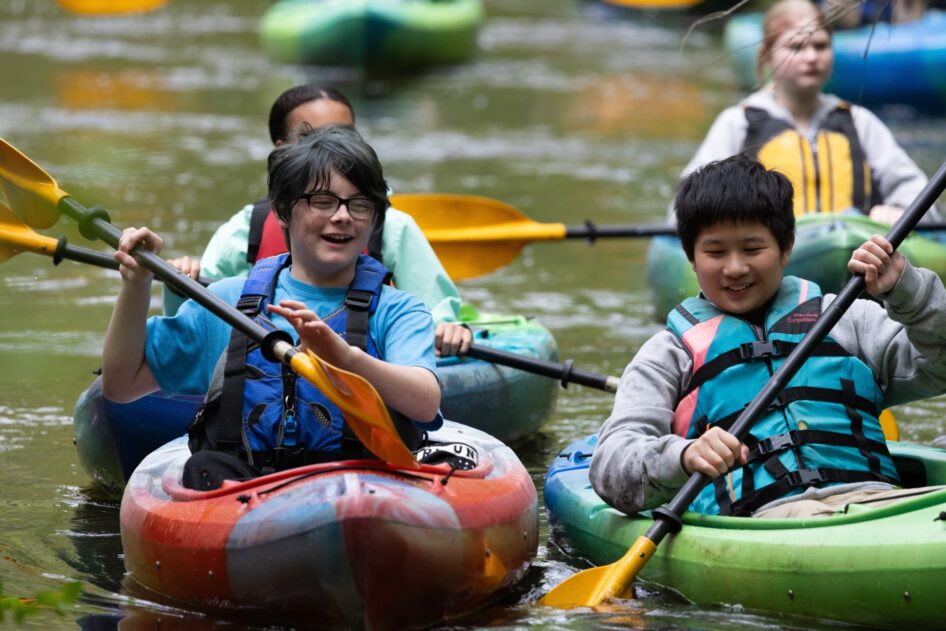A Roadmap to Environmental Literacy Plans

When environmental groups joined forces to create Environmental Literacy Plans (ELPs) for three different school districts in Virginia's Middle Peninsula, there may be one word that best describes the project—ambitious! After nearly three years of strategic collaboration, each school district has comprehensive plans to move their environmental literacy programming forward. Travel along the “roadmap to ELPs” below to discover best practices and dodge potholes!
“The Environmental Literacy Plan matters to me because it allows students to understand and appreciate the world/environment around them to help grow their knowledge of the natural resources with hands on experiences rather than the everyday classroom settings”
- Caroline Community Partner
Step 1 Along the Road: Survey the School Community
The Partner Team described the roadmap for this ambitious project as “backwards planning.” They started by distributing a Community Survey within each of the three school districts: Essex County Public Schools, Caroline County Public Schools, and Middlesex County Public Schools. The results from the survey weren’t too surprising but validated their mission—the community supports more outdoor learning. The biggest impact from this community engagement was spreading awareness about the project and identifying potential partners that could support advancing environmental literacy in each division.
“A lot of students have mixed understanding on what is going on with the environment due to lack of proper education; working on an environmental literacy plan helps to eliminate confusion and guide future generations”
- Essex Steering Committee member
Early in the project the Partner Team also researched potential locations for outdoor field experiences within each district and visited the sites so they could experience the places firsthand and get a better understanding of the amenities available and feasibility of hosting students. These turned out to be valuable excursions and the lists of outdoor learning opportunities were used later in drafting each ELP.

Step 2: Meet with School Administrators
After spending time in each community, the Partner Team met with administrators from all three districts to share the strong local support for the ELP. They assured district leaders that the plan would be backed by teacher resources and rooted in the Virginia Standards of Learning. At the request of the districts, the Partner Team created a Teacher Survey which was shared with all staff. In all three districts, administrators were surprised to learn that a majority of respondents selected “Rarely” or “Not applicable” when asked “How often do you use the outdoors to teach?” This greatly reinforced the need for an ELP.
To build momentum and support, the Partner Team also hosted “Seeing Through the Eyes” events for senior administrators and community members. These events offered participants a chance to experience elements of a Meaningful Watershed Educational Experience (MWEE) currently happening within their district. Not only were these events enjoyable, but they proved instrumental in uniting senior leaders from across the districts. The gatherings sparked meaningful conversations as participants shared their visions for advancing environmental literacy.
Step 3: Coming Together and Drafting a Plan
After building buy-in and support from senior leaders and analyzing the landscape, the Partner Team was ready to start work on the ELPs. A Steering Committee composed of school administrators, teachers, parents and community members was formed in each of the three counties. Over about six months, each committee met five to six times and ultimately created an Environmental Literacy Plan for their district.
Best practices adopted by the Partner Team to facilitate the creation of each ELP:
Have everyone contribute and agree to a Steering Committee Agreement (Middlesex County agreement example); this helps ensure that all participants understand and commit to shared responsibilities and expectations.
Set all meeting dates and times in advance and meet in-person as much as possible; although virtual meetings can be convenient, in-person meetings result in better discussion.
Share meeting agendas digitally and include links to relevant documents to help people follow along or catch up on what they missed.
Provide stipends to all participants and have snacks and some element of fun at each meeting.
Connect each meeting to an ELP output so progress can be seen consistently.
Use a third party facilitator (for this project it was the Partner Team) to help level the playing field between participants; for example, to help a teacher feel comfortable speaking up even if their supervisor is present.
Step 4: Completing the ELP
The backbone support each Steering Committee received from the Partner Team was what made this project so successful. Not only did the team schedule meetings, take notes and create agendas, they worked tirelessly to ensure all committee member voices were uplifted and heard during each meeting. The Partner Team then used their notes to write drafts so the committee could use their time more efficiently by reacting to and editing content rather than creating it from scratch.

After a couple of revisions and final approval of each ELP’s content, graphic designers were enlisted to layout the final product. The Partner Team recommends carefully selecting a graphic designer who will meet the design needs of the final product. Explore each of the final ELPs below:
“Protecting our environment begins with people who are passionate and concerned and have tools and knowledge to protect and advocate. Tools and knowledge are taught and need to be part of every child’s curriculum”
- Middlesex Community Member
Step 5: Implementation and Reflection
Each county is currently working on implementing their ELP. In Caroline, district staff are meeting regularly to determine how to best implement the MWEEs and other activities outlined in the ELP. Plus, a new Garden Committee is working on improving school garden infrastructure to support more outdoor learning. Recently purchased science and MWEE supplies will also support existing and new outdoor educational efforts.
Essex has benefited from the expanded network of community partners involved with the school. The most recent partner-supported professional development was informed by the Essex ELP. Teachers were trained on curriculum and activities like Aquatic Wild, Project Learning Tree and other hands-on MWEE activities. The trainings also included time for teachers to work with the district’s ELP to start developing their grade-level MWEE using the Think Cloud tool.
Lastly, Middlesex is adding a section to each student’s digital portfolio that can be used to record their participation in environmental literacy activities and action projects so the community and parents can see how the implementation of the ELP is impacting each student’s K-12 career.

In reflecting on the implementation step, the Partner Team suggests asking the school directly what would need to happen for the ELP to get into the hands of teachers. Be prepared to make supporting resources, host teacher professional development, and/or present to the school board (example School Board presentation script). And, if you can align the goals of the ELP with the school district’s strategic plan, it can raise the authority of the document and support implementation efforts (see page 12 of the Middlesex ELP).
The Partner Team also wished they would have done a comprehensive review of all the environmental education happening within each district at the start of this project so those activities could have been integrated more seamlessly into the ELP. Showing how the work each school district was already doing fits into the new plan can help with implementation and buy-in.
Lastly, this isn’t the end of the story. As most know, education is always changing. Each Steering Committee has agreed to meet to consider periodic revisions to their respective ELPs, especially when there are new state standards or district strategic plans are updated. The hope is, though, that these community and school partners have created lasting plans together that will result in many more environmentally literate graduates from Virginia’s Middle Peninsula.
